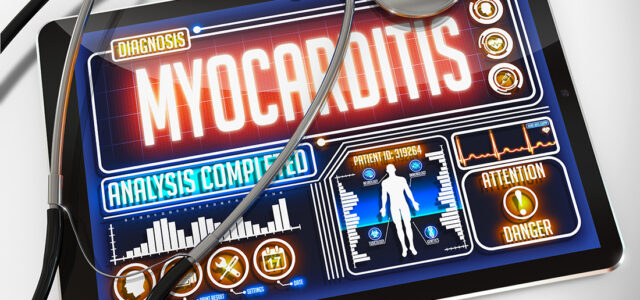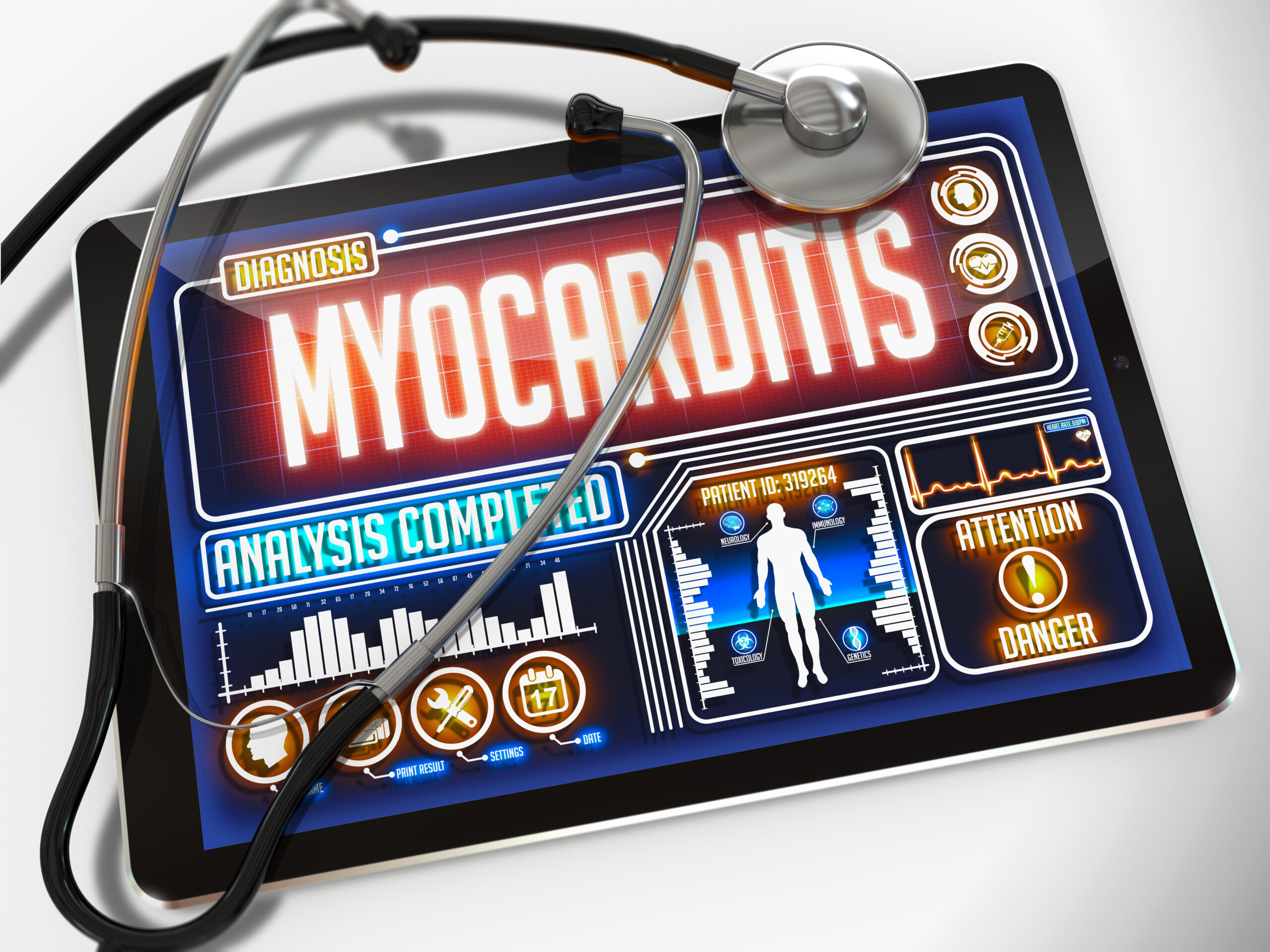Call for your appointment today 914-666-4665 | Mt. Kisco, New York

In 2013, the Centers for Disease Control and Prevention (CDC) described three cases of sudden deaths associated with Lyme-induced myocarditis. “During November 2012 and July 2013, one woman and two men (ranging in age from 26 to 38 years) from high-incidence Lyme disease states experienced sudden cardiac death and, on postmortem examination, were found to have evidence of Lyme carditis.” [1]

In pediatric patients with Lyme myocarditis, the most common presenting symptoms include respiratory and gastrointestinal distress, with or without chest pain.
In this week’s journal of Pediatric Emergency Care, researchers offer insight into how Lyme myocarditis might present in a patient as they describe the case of a previously healthy adolescent diagnosed with the disease. [2] The patient lived in a Lyme-endemic region but did not recall a tick bite.
A 15-year-old African-American girl was hospitalized after a three-day history of intermittent retrosternal and epigastric pain. The pain was described as “gnawing” and “twisting” without radiation in the sternal and right upper quadrant area. The pain was 9 on a 1 to 10 scale. There was no evidence of costochondritis.
Cholecystitis was considered. She presented with mild abnormal elevations of her liver function tests, focal dilation of the common bile duct, gallbladder thickening by ultrasound, and a positive Murphy sign. (Murphy’s sign is a test for gallbladder disease in which the patient is asked to inhale while the examiner’s fingers are pressed under the right rib cage. If the patient stops breathing or is in pain as the patient breaths out, the gallbladder is inflamed.) The pediatric surgeon concluded the exam was consistent with cholelithiasis but not acute cholecystitis.
The patient was hospitalized with a presumptive diagnosis of myocarditis. Her initial electrocardiography (EKG) “indicated normal sinus rhythm but revealed low voltages throughout all leads, widened QRS complex, right axis deviation, and nonspecific intraventricular conduction block.” Fishe also noted that the “Troponin-I was markedly elevated at 15.81 ng/mL indicating myocardial injury (hospital laboratory criterion for acute myocardial infarction >0.3 ng/mL).” Additionally, “A bedside echocardiogram revealed moderately diminished left ventricular systolic shortening (ejection fraction, 37% – 40%) and a trivial pericardial effusion.”
Lyme disease was considered on the first day during empiric treatment with 1 g/kg intravenous immune globulin (IVIG). She developed second-degree atrioventricular block (Mobitz type 2) and hypotension.
Lyme disease tests were ordered, and she was empirically started on doxycycline. She was treated with milrinone infusion for afterload reduction and intravenous furosemide for pulmonary edema. Her EKG changed to first-degree heart block by day 2 and resolved completely on hospital day 3. The authors noted that a Cochrane review found insufficient evidence to support IVIG use in acute myocarditis.
Her Lyme disease was subsequently confirmed with serologic tests. Lyme enzyme-linked immunosorbent assay (ELISA) and immunoglobulin M (IgM) of 0.87 (reference range, 0.00 – 0.79) were positive.
The patient recovered and was discharged home on hospital day 7 on oral furosemide, enalapril, and doxycycline, according to Fishe and colleagues.
“It is important to explain all results that are found as part of the diagnostic work-up,” the authors conclude. Furthermore, “In patients with Lyme disease who complain of cardiopulmonary symptoms, clinicians should have a low threshold for obtaining an EKG to evaluate for Lyme carditis.” [2] And, note that in “children and adolescents, respiratory and gastrointestinal complaints, with or without chest pain, are the most frequent presenting symptoms.”
The case of a young man who died from undiagnosed Lyme carditis is discussed in another All Things Lyme blog, Relying on a Negative Lyme Disease Test Can Prove Deadly.
References
- Centers for Disease C, Prevention. Three sudden cardiac deaths associated with Lyme carditis – United States, November 2012-July 2013. MMWR Morb Mortal Wkly Rep, 62(49), 993-996 (2013).
- Fishe JN, Marchese RF, Callahan JM. Lyme Myocarditis Presenting as Chest Pain in an Adolescent Girl. Pediatr Emerg Care, (2016).




Hello Dr Cameron: my son has similar Lyme carditis symptoms now: 1st degree AV block and shortness of breath (since May), new intermittent pain in sternum (esp. upon sneezing) and abdominal pain within the last two days. He has a WB from May; pos IGm for 2 bands and IGg pos for three bands specific to Lyme per Horowitz criteria. Negative ELISA. Neg. Babesia PCR via Sonoma.
Based upon migrating muscle and joint pain, heart block, he was treated with oral doxy six weeks, June- July and then added 3 weeks of azithromycin and atovaquone for presumptive babesia when the dyspnea got worse. Muscle and joint pain resolved after 5 weeks; dyspnea improved much, as of mid July, but still remains now and is getting worse along with new onset chest and stomach pain.
His Aug 8 EKG follow-up shows 1st degree AV block still.
What imaging and testing do you recommend for him now? It seems IV ceftriaxone is far superior to oral doxy in cases like this?
Lyme disease can lead to autonomic changes that affect the stomach. C. difficile can also affect the stomach. It is hard to know if the heart block will change. I like IV. I also like doxycycline.
Hello Dr. Cameron. I an a Registered Nurse for nearly 25 years. I have a friend whose son (@35 y/o male) who is suffering from unsuccessful treatment of Lymes Disease. He, today is c/o sub- sternal pain, headaches, extreme fatigue. He lives in Maryland where he believes he was bitten by a tick. To date, he has been unable to locate a Physician who can/will treat him. He has been dealing with this for @ 2 1/2 years and I, in my Nursingexperience, believe his medicalstatus is worsening. Is there anything you can direct him towards in terms of “next steps.” I, as an RN am concerned about possible endocarditis. My email is
di**************@***il.com
My name is Diane Lee Bloodworth
I reside in Pennsylvania.
Thank you very much for any information or suggestions you may provide.
Hello Dr Cameron I’m a 43 year women I was just diagnosed with a positive western blog test for lyme disease I was given doxycycline took for 15 days only because I developed a right abdominal pain and dark urine also left side pain after this I was given 300 mg of cefdinir for a urinary tract infection ( proteus mirabilis) finish the treatment .ultrasound showed I now have one kidney inflamated and acalcoulous cholecystitis I’m having mild pain I do feel ill but nothing I cannot handle what should I do thier sending me for a HIDA scan .I’m getting intravenous ceftriaxone I believe in two days for lyme and I also have a bladder cyst and a prolapse that needs intervention any advice would be very much appreciated?
I am glad you have a doctor who is working through each of your issues. I would be concerned using IV ceftriaxone as it can leave sludge in your gall bladder and you have a history of cholecystitis. Call my office at 914 666 4665 if you have any questions.